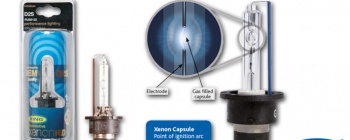
Understanding HID Bulbs
Vehicle lighting specialist, Ring Automotive, addresses common concerns about High Intensity Discharge (HID) bulbs from voltage to fitting safety.
Use of HID headlamp bulbs, also known as Gas Discharge or Xenon Bulbs, have steadily increased in the automotive market. Up to 3 times brighter than a halogen bulb, HID bulbs also have extended lifespans that average around 2,500 hours of use. The colour temperature of HID bulbs is 4100°K, producing a crisp white light output, similar to daylight.
HID bulbs have no filament. Instead, xenon gas is contained in a glass capsule in the centre of the bulb. Two metal electrodes going into the glass capsule enables a high voltage pulse (24,000 volts) to cross the xenon gas in an arch shape, producing a bright, white light output.
Despite the benefits and sales opportunities, many aftermarket technicians and mechanics tend to find HID bulbs intimidating due to their extremely high voltage and cost. However, rather than lose the opportunity to increase sales margin, adhering to these actions can help technicians and mechanics to replace HID bulbs safely and effectively:
ISOLATE LIGHT CIRCUIT, TURN OFF THE IGNITION AND HEADLIGHT SWITCH - Isolate the headlamp circuit by removing the relevant lighting fuse. As HID bulbs run at very high temperatures, it is important to also allow it time to cool down.
ALWAYS REPLACE BULBS IN PAIRS - HID bulbs should be replaced in pairs to ensure a colour match and consistent light output.
Ring HID Bulbs are available same/next-day from FPS via F:Drive or MAM Autocat. For more information, speak with your local FPS representative.



 Click here to open the navigation menu
Click here to open the navigation menu